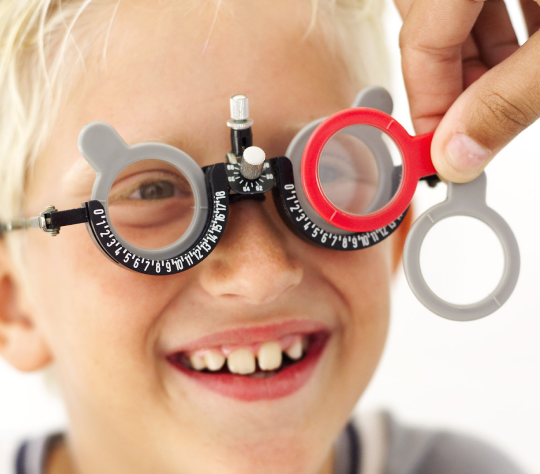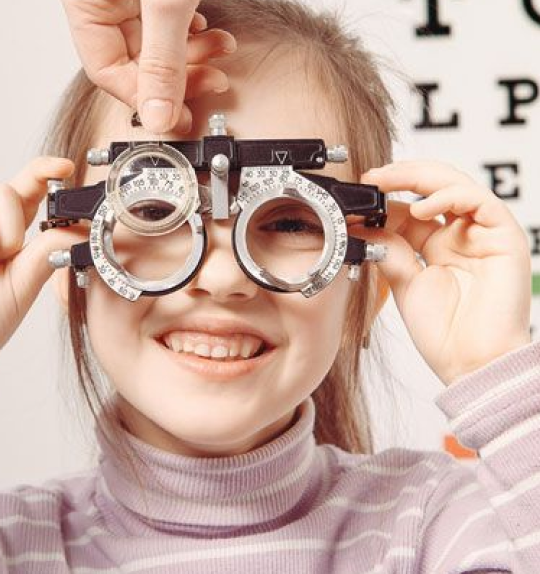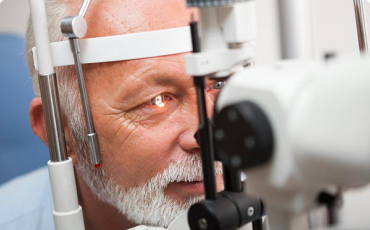Headache and nausea are two symptoms that can significantly impact your quality of life. Affecting both adults and children, it can prevent you from attending work, school, and social activities, ultimately preventing you from living your life.
If you are someone who has seen endless medical practitioners and doctors and received little to no relief from your headaches and nausea, you know how frustrating it can be. Many patients are often misdiagnosed with a variety of headaches, from migraines to atypical migraines, sinus headaches, and muscle tension headaches. They often find no relief from their symptoms despite taking the prescribed medications and making the recommended lifestyle adjustments their doctors and specialists advise.
But what many people do not realize is that the headache and nausea could actually be a result of Binocular Vision Dysfunction (BVD), a treatable condition affecting the eyes.

What Causes Headache and Nausea?
BVD is a result of there being a misalignment between our eyes. It’s important to note this misalignment can be very subtle. This makes it very difficult for our eyes to send one clear image to our brain. It’s common for people to be told their headaches are a result of vestibular migraines, but this condition is actually very rare and only affects 1% of people in the U.S. However, BVD is a much more common condition, affecting approximately 20% of individuals in the U.S.
Here’s how BVD works: With two eyes, we are able to see one clear image. This is because our brain is able to transform two separate images into a single image, which is known as binocular vision. But in the case of people with BVD (patients who have a slight misalignment between their eyes, therefore their eyes are out of sync with one another), it’s difficult for the brain to process and create those two separate images into one clear image.
The brain responds by forcing the eye aligning muscles to fix the problem by realigning the eyes. The realignment is only temporary and misalignment then recurs, which is followed closely by realignment, and the cycle of misalignment and realignment continues. Over time, this places an immense amount of strain on the eye muscles, which become very fatigued and sore. This leads to uncomfortable and sometimes severe headaches and nausea.
What is headache and nausea?
A headache is when we experience discomfort anywhere on our head, face or back of the neck. There are several different types of headaches, which are often confused with Binocular Vision Dysfunction.
- Migraines: Pain from migraines can be debilitating. Migraines are categorized by severe pain, light and sound sensitivity, and migraines and nausea are often experienced together. Migraine and upset stomach can also occur simultaneously. When you suffer from vision misalignment, your eye muscles are strained, and struggle to see clearly throughout the day. The pain from your eye muscles, as they constantly battle to keep your vision in alignment might cause the same discomfort as migraines.
- Atypical Migraines: Usually, a migraine provides its sufferer with a visual signal alerting them to the oncoming discomfort, while atypical migraines frequently start with the throbbing head pain. Your atypical migraine symptoms might actually be the result of a vision misalignment. By treating the vision misalignment, we can provide you with the relief you need.
- Sinus Headaches: With the overuse and overexertion of your eye muscles constantly attempting to realign your eyesight, the result can be the same discomfort and pain as a sinus headache. By treating the vision misalignment, we relieve the constant pressure within your face and provide you with long-term sinus headache relief.
- Muscle Tension Headaches: Your eye muscles are constantly being strained as your eyes attempt to realign themselves and create one clear image. This relentless stress and overuse of your eye muscles feel the same as a muscle tension headache for many of our patients. By eliminating this constant overuse of your eye muscles, we provide you with muscle tension headache relief.
Nausea is a feeling that you might become sick and vomit. Oftentimes, a bad headache and nausea occur at the same time. Both can be uncomfortable and debilitating.

Can you get nauseous from a headache?
Yes, many people who experience a headache also become nauseous. Some people even experience headaches and vomiting which causes them to become dehydrated. This is because a headache can significantly affect your vision, making you feel as if you are spinning, or make you feel that the ground under you is moving. Your vision can also become blurred with headaches. All of these sensations and symptoms can result in you feeling nauseous.
How to get rid of nausea and headache?
When you are experiencing nausea and headaches as a result of BVD, treatment is in the form of miro-prism lenses from Vision Specialists of Michigan. In fact, the average patient will notice a 50 percent reduction of symptoms by the end of their first visit. These specialized aligning lenses enable your eyes to work together as a team, which then eliminates your symptoms of nausea and headaches.
Common Symptoms for Adults with Binocular Vision Dysfunction
There are several symptoms associated with BVD in adults, which typically include the below. Some individuals experience all of these symptoms, while others experience only a few, such as headaches, nausea, and dizziness. These symptoms are also very similar to those associated with vestibular migraines and vertigo.
- Headaches
- Dizziness
- Nausea
- Anxiety
- Sensitivity to light
- Difficulty with balance / unsteady walking
- Pain in the neck
- Frequent head tilt
- Motion sickness
- Difficulty reading and learning

Nausea and Headaches in Children
Nausea and headaches not only affect adults with BVD but can affect children as well. When children regularly experience headache and nausea, it can result in them missing school and therefore delaying their reading and learning, as well as possibly leading to a misdiagnosis of ADD or ADHD.
If your child has BVD, the symptoms will vary depending on their age.
For children ages 4 to 8-years-old, common behaviors and symptoms of Binocular Vision Dysfunction can include:
- Poor handwriting (poor spacing, writing letters too big or small)
- Difficulty reading
- Avoiding activities with crowds such as shopping
- Playing with toys very close to their face
- Sitting close to the TV
- Difficulty identifying shapes, colors and numbers that are age-appropriate
- Difficulty seeing the class board
- Frequently bumping into objects
- Difficulty catching balls
- Stomach aches and headaches at school or away from home
- Light sensitivity
- Covering one eye to see
- Anxiety in public places
- Frequent squinting in order to see
For children ages 9 to 13-years-old, common behaviors and symptoms of Binocular Vision Dysfunction can include:
- Repeatedly bumping into things while
walking - Having difficulty completing homework due to headaches and nausea
- Repeatedly reading the same things over and over / difficulty with reading comprehension
- Sensitivity to bright lights
- Closing one eye to make it easier to see
- Blurred vision when using the computer
- Blurred vision or tired eyes when looking at the blackboard in class
- Verbal skills that are ahead of reading skills
- Frequent blinking
Treatment For Your Extreme Headache and Nausea
For anyone suffering from headaches and nausea as a result of BVD, there is treatment. Our micro-prism lenses correct the misalignment between your eyes, allowing them to work together as a team. These specialized lenses specifically bend light in a way that the image seen by your eye is moved into the position it needs to be in – this results in the image becoming realigned and your headaches and nausea, as well as other symptoms, are markedly reduced or eliminated.
With the micro-prism lenses helping your eyes to work together to create one clear image, there’s no longer a constant struggle to realign vision. Ultimately, the glasses eliminate the need for your eye muscles to strain, resulting in marked relief from dizziness, headaches, nausea, and any other symptoms related to BVD.
At Vision Specialists of Michigan, we make our treatment easy for patients of all ages. Our compassionate doctors will complete a thorough NeuroVisual Examination to determine the extent of your vision misalignment (or your child’s) and prescribe you with the specialized aligning lenses. Every person can receive treatment for BVD, as long as they are old enough to wear the specialized aligning glasses (and be able to tell or show the doctor how they feel).
The average patient will notice a 50 percent reduction of symptoms by the end of their first visit. The aligning lenses are fine-tuned and perfected for the patent over the next several visits, helping the individual to continue feeling better and eliminating the unpleasant symptoms of BVD.
Frequently Asked Questions
Yes, many patients with BVD experience difficulty with driving. This is because two of the most common symptoms associated with the condition are headaches and dizziness, which alters your depth perception, balance, and equilibrium, essentially making it difficult to see the road, signage, and nearby cars.
BVD can be the result of your facial asymmetry (where one eye is higher than the other), nerve or eye muscle abnormality (a common condition many people are born with), or it can develop as a result of stroke, brain injury, concussion, or a similar neurological disorder.
To determine if your symptoms are the result of Binocular Vision Dysfunction, we suggest you first see your primary care physician or specialist to rule out other causes for your symptoms. If no cause is found for the symptoms, then BVD might be the issue.
- We ask you to fill out a specialized questionnaire designed to screen for those who might have BVD.
- You will be asked to complete a detailed Health History form.
- An eye exam is performed to determine the need for correction of nearsightedness, farsightedness, and astigmatism (a common imperfection in the eye’s curvature).
- A specialized exam is performed (NeuroVisual Evaluation) to determine if visual misalignment is present.
- If diagnosed with BVD, you will be fitted with a trial version of your new prescription. Most people notice a significant improvement in their symptoms within just a few minutes of putting on the trial lenses.
You can expect to spend approximately 3 hours in our office during your visit.












